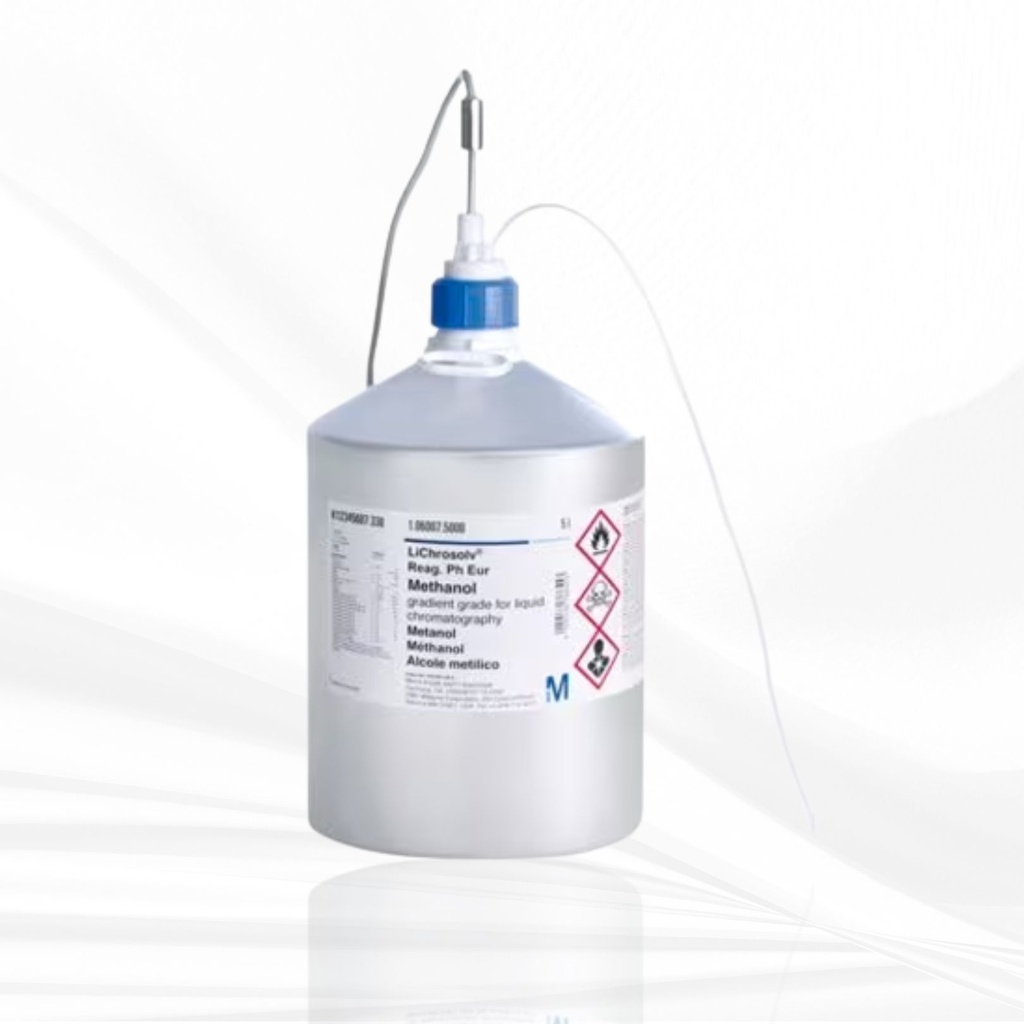General description
With their high degree of UV transmittance, low particle
count, low acidity and alkalinity and low evaporation residue level, LiChrosolv
solvents are ideal for reproducible separations. Since separations are normally
carried out under gradient conditions in analytical HPLC, we offer solvents in
"gradient grade" as well as "isocratic grade". This enables
to minimize the gradient effect of the solvent involved.
Application
Methanol is used as a solvent:
- In the
mobile phase to separate mercury species on a Zorbax C18 reverse phase
column. [1]
- To
wash the cartridges and as an eluent to extract the analytes during the
solid-phase extraction (SPE) process. [2]
Preparation Note
Product filtered through a 0.2 μm filter
Analysis Note
Evaporation Number: 1.9
Purity (GC): ≥ 99.9 %
Identity (IR): conforms
Evaporation residue: ≤ 2.0 mg/l
Water: ≤ 0.02 %
Color: ≤ 10 Hazen
Density (d 20 °C/20 °C): 0.791 - 0.793
Boiling point: 64 - 65 °C
Acidity: ≤ 0.0002 meq/g
Alkalinity: ≤ 0.0002 meq/g
Gradient grade (at 235 nm): ≤ 2.0 mAU
Gradient grade (at 254 nm): ≤ 1.0 mAU
Fluorescence (as quinine at 254 nm): ≤ 1.0 ppb
Fluorescence (as quinine at 365 nm): ≤ 0.5 ppb
Transmission (at 210 nm): ≥ 20 %
Transmission (at 220 nm): ≥ 60 %
Transmission (at 230 nm): ≥ 75 %
Transmission (at 235 nm): ≥ 83 %
Transmission (at 250 nm): ≥ 95 %
Transmission (from 260 nm): ≥ 98 %
Absorbance (at 225 nm): ≤ 0.170
Filtered by 0.2 µm filter.
Suitable for UPLC / UHPLC /Ultra HPLC - instruments.
Conforms to Methanol R1 and R2 according to Reag. Ph Eur;
conforms to the requirements of ACS for liquid chromatography suitability.
Other Notes
Explore various lab safety accessories and equipment for safe handling of solvents to increase your
safety level from the first usage.
Legal Information
LICHROSOLV is a registered trademark of Merck KGaA,
Darmstadt, Germany




